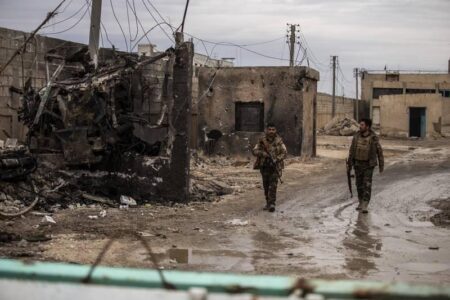
Islamic State terrorist attacks in Syria have declined while new fighters join terrorist cells
A significant drop in ISIS attacks in Syria is due to new fighters being integrated into the group, a terrorism monitor has said.
The Counter Extremism Project (CEP), which keeps a monthly record of attacks by ISIS, suggests fighters freed in the Hassakeh prison break in January are joining new cells and being trained.
Thousands of ISIS prisoners were believed to have initially escaped the Ghwayran jail in Hassakeh, Syria, when attackers detonated a car bomb near the prison gates.
It led to a week of clashes inside and around the jail, which is run by the Kurdish-led Syrian Democratic Forces (SDF). Hundreds died before US-led Kurdish forces recaptured the site.
It is the largest prison holding ISIS detainees, with Human Rights Watch estimating it holds 12,000 men, including up to 4,000 foreign terrorist fighters. It is not known how many are still at large.
In April, the CEP recorded seven deaths from at least six ISIS attacks in the Homs, Deir Ezzor and Hama regions.
CEP researcher Gregory Waters said he recorded a significant drop in activity and believed it could be because the escaped fighters are being trained and placed in terrorist cells.
“ISIS activity decreased significantly in April compared to March, matching the historic low points that occurred in January and July 2019,” he said.
“This decrease in activity came despite no changes in the Syrian regime’s security posture or any significant anti-ISIS operations. It is unclear why April was so quiet, but it appears to be a result of ISIS’s own strategic decisions, rather than something imposed on the group by regime security pressure.
“The lack of any significant or co-ordinated anti-ISIS operations in central Syria raises interesting questions as to why ISIS has been so quiet here of late.
“I have previously raised the idea that ISIS is taking time to integrate prisoners it freed during the January Hassakeh prison attack into cells across central Syria. It is possible that this continues to be the case.
“Another possibility is that ISIS cells are using this time of low pressure to rest, refit, and plan more medium- and long-term attacks, such as infiltration attempts into southern Homs and the Damascus countryside.”
Source: The National News





